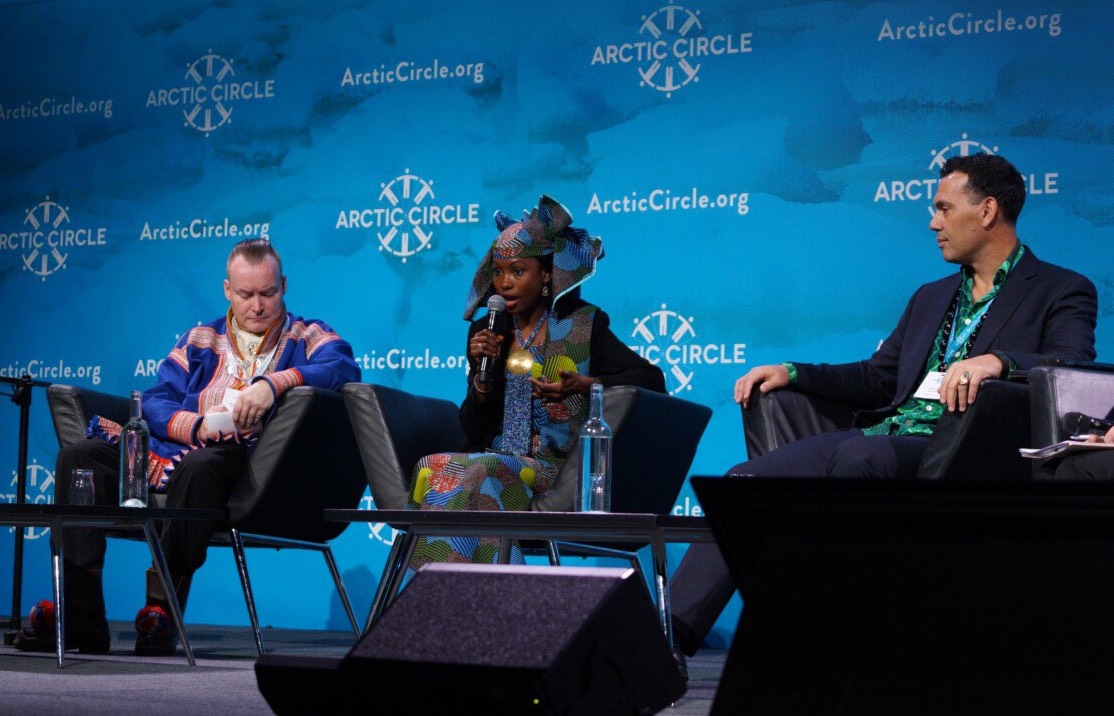As the Arctic’s biggest annual gathering matures, its focus turns outward
ANALYSIS: For the Arctic Circle Assembly to succeed, what happens in Reykjavík cannot stay in Reykjavik.

Peruse the program of this year’s edition of Arctic Circle, a big conference taking place this week in Reykjavík, Iceland, and it appears no stone will have been left unturned by the time it ends on Sunday. Indeed, certain issues — China’s role in the region, for one — will get turned multiple times. The diversity, as well as the repetitiveness, are due to gathering’s design: most topics to be taken up have been proposed by outside groups and who then present them during panels they organise themselves.
“The agenda reflects what the participants find important,” says Ólafur Ragnar Grímsson, a former president of Iceland who co-founded the gathering and continues to lead it as chairman. (Disclosure: ArcticToday Publisher Alice Rogoff was also a co-founder.)
There are, of course, some issues that are too obvious for organizers to ignore, like the roles of Asian states and the EU, and the impact of global warming. Those will get talked about on the main stage. But putting them there, according to Grímsson, is not an attempt to say they are more important than anything else. Instead, he explains,it is a way to “indicate direction and emphasis” in discussions that will be happening anyway.
Other topics being highlighted may come as more of a surprise. This year, for example, there are five sessions dealing with the “third pole.” a nickname given to the Hindu Kush-Karakoram-Himalayan region because it stores more snow and ice than anywhere else in the world outside the polar regions. According to Grímsson, there is good reason for making it a priority.
[Do conferences about the Arctic really matter?]
The topic appeared on the program of the inaugural Arctic Circle, in 2013, when the discussion focused on the science of glacial retreat, and whether the two regions could learn anything from each other. (Switzerland, a newly admitted observer to the Arctic Council, has a similar interest.)
When it re-appeared last year, it had a political bent. The region, spreading out across 4.5 million square kilometers, encompasses 11 countries that do not always cooperate as well as Arctic states do. Giving the topic more room on the agenda this year is a way to show how the Arctic can be a model for helping the region address common concerns.
Another way the organization seeks to bring discussions about the Arctic to the rest of the world is through its twice-annual forums. Though they’re typically held at non-Arctic locations, these forums have mostly taken place in Arctic states, or close by (Scotland and the Faroe Islands hosted the last two). Singapore, though, hosted the second forum, in 2015, and other Asian nations that are Arctic Council observers have shown interest in following suit, suggesting that they are looking for additional outlets to actively take part in discussions about the region. The next forum will be held in Seoul, in December. And an announcement of a China forum to be held Shanghai next May is expected at this week’s conference.
One reason there is a waiting list to host forums may be that it is getting more difficult for organizations to get their message across during the main event. A growing number of attendees (2,000 are expected this year) attracts higher level participants, which makes for more serious discussions. But some conference-goers miss the early years, when topics were less obviously Arctic and thus more thought-provoking. (In 2013, Eric Schmidt, the chair of the company then known as Google, talked about AI and the Arctic.) Critics also note that the meeting still has no big agreement or other sort of accomplishment under its belt.
This, however, may be missing the point of the going to Arctic Circle, as well as its potential. It may have been easier to mingle when there were fewer people, but networking is still the big draw, at least for some. It’s also a way to remain productive once you have had your fill of presentations.
As far as agreements go, Arctic Circle, is still more talk than action, admits Benjamin Ford, an American lawyer who will attend for the fourth time. Still, he believes that the past meetings have set the table for the next step by sizing up the region’s needs and identifying who has the resources to meet them. What is needed now, he believes, is to connect the two.
“They don’t need to be massive infrastructure projects, just a few simple things to show that cross-border collaboration around Arctic issues can work.”
A small step for the Arctic, but a sign that the Arctic Circle is hitting its stride.